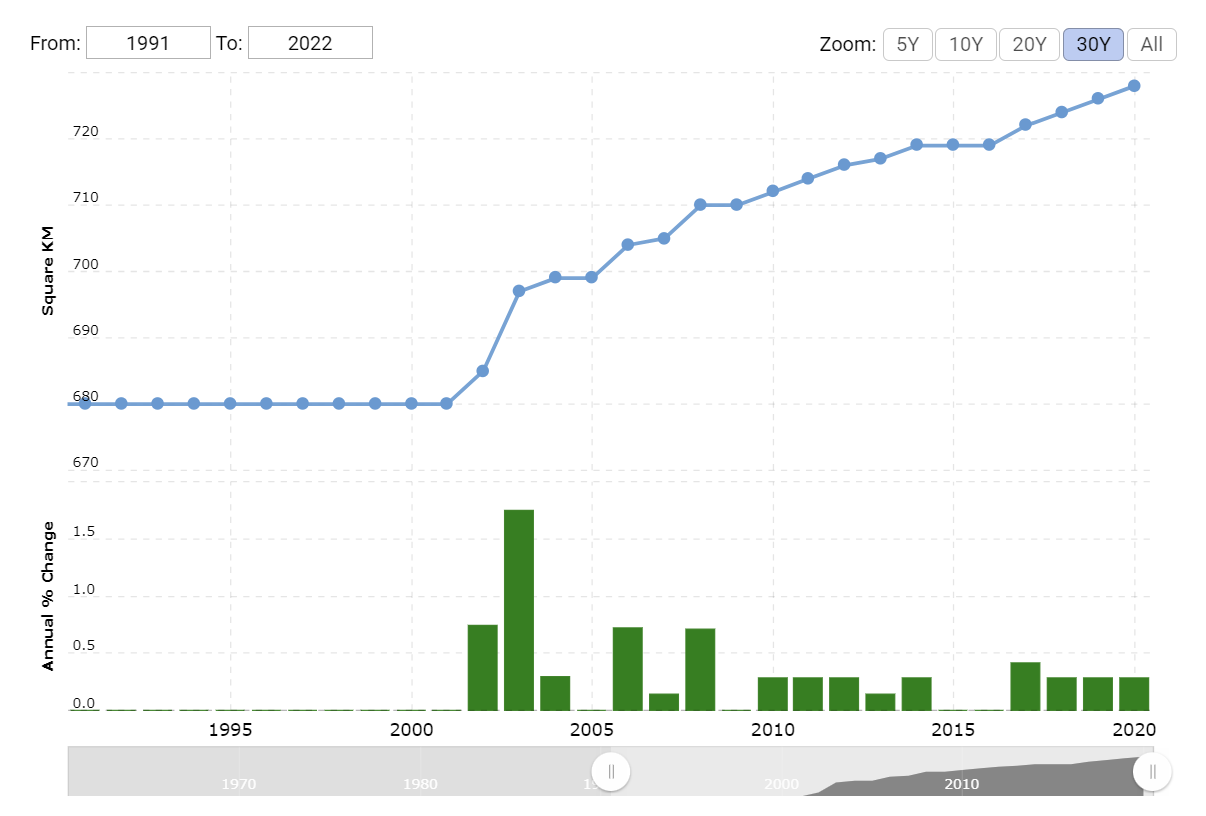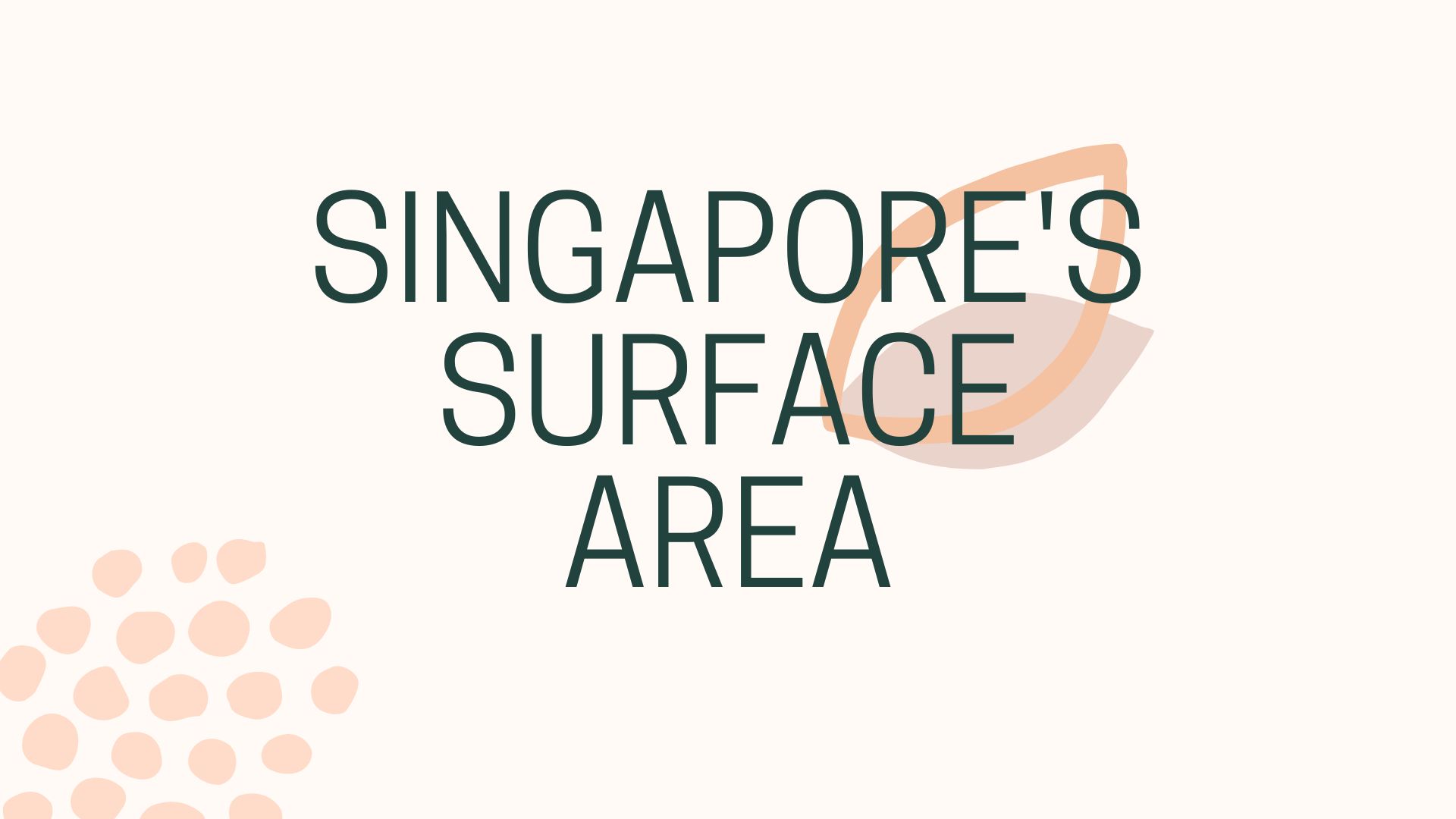Singapore is a small island nation that has come a long way since its humble beginnings as a fishing village. With a land area of just 728.3 square kilometres, Singapore has had to make the most of every inch of available space. Over the years, the city-state has undergone significant changes, from land reclamation to the construction of towering skyscrapers. Today, Singapore is a bustling metropolis that is home to over 5.6 million people. But have you ever wondered how Singapore’s surface area has evolved over time? In this article, we take a historic perspective on the growth of Singapore’s land area, exploring the various methods used to expand the city-state’s territory and how this has impacted Singapore’s development. So sit back, relax, and join us on a journey through time as we explore the fascinating history of Singapore’s changing surface area.

Early history of Singapore’s land reclamation
The history of land reclamation in Singapore dates back to the early 19th century. In those days, Singapore was a small island with limited space for development. The British colonial government recognized the need for more land and began a series of land reclamation projects. The first major project was the reclamation of Telok Ayer Bay, which was completed in the 1820s. This project added a significant amount of land to the island and provided space for commercial and residential development.
Over the years, more land reclamation projects were undertaken, including the reclamation of the Singapore River, Boat Quay, and Collyer Quay. These projects created new areas for commercial activities and provided space for the construction of new buildings. However, the land reclamation process was slow and labor-intensive, and it was not until the 20th century that Singapore’s surface area began to expand rapidly.
The impact of colonial rule on Singapore’s surface area
Colonial rule had a significant impact on Singapore’s surface area. The British colonial government recognized the need for more land and began a series of land reclamation projects. These projects created new areas for commercial and residential activities and provided space for the construction of new buildings. However, the land reclamation process was slow and labor-intensive, and it was not until the 20th century that Singapore’s surface area began to expand rapidly.
During the colonial period, Singapore’s surface area increased significantly, and the city-state became an important trading hub in Southeast Asia. The colonial government invested heavily in infrastructure, including roads, ports, and railways, which facilitated trade and commerce. The development of infrastructure and the expansion of Singapore’s land area laid the foundation for the city-state’s economic success in the decades to come.
Rapid development and urbanization in the 20th century
The 20th century saw rapid development and urbanization in Singapore, fueled by the government’s vision of transforming the city-state into a modern metropolis. The government embarked on an ambitious program of land reclamation, which created new areas for development and expanded Singapore’s surface area.
One of the most significant land reclamation projects during this period was the creation of Jurong Island, which was completed in the 1990s. Jurong Island is now home to a large petrochemical complex and has become an important hub for the chemical industry in Southeast Asia. Another notable project was the construction of Marina Bay, which involved the reclamation of land from the sea and the creation of a new central business district.
The rapid development and urbanization of Singapore in the 20th century transformed the city-state into a modern metropolis with world-class infrastructure and amenities. However, this rapid development also created new challenges, including the need for sustainable development and the preservation of Singapore’s natural heritage.
Singapore’s innovative land reclamation projects
Singapore’s innovative land reclamation projects have become the envy of the world. The city-state has developed new techniques and technologies to expand its land area, including using sand to reclaim land from the sea. Singapore has also developed a system of polders, which involves creating a ring of land around a body of water and then pumping out the water to create dry land.
One of the most ambitious land reclamation projects in Singapore’s history is the creation of the Tuas mega port. The project involves reclaiming land from the sea to create a new port that will be capable of handling the world’s largest container ships. The Tuas mega port is expected to be completed by 2040 and will be a crucial part of Singapore’s economy for decades to come.
Current challenges and future plans for land use in Singapore
Singapore faces a number of challenges when it comes to land use. The city-state has limited space for development, and there is a growing need for sustainable development to ensure that Singapore’s natural heritage is preserved for future generations. In recent years, the government has taken steps to address these challenges, including the development of green spaces and the promotion of sustainable development.
One of the government’s most ambitious plans for the future is the development of the Greater Southern Waterfront. The project involves the transformation of a 2,000-hectare area along the southern coastline of Singapore into a new waterfront district with housing, commercial, and recreational facilities. The project is expected to be completed by 2030 and will be a significant addition to Singapore’s surface area.
The economic benefits of Singapore’s surface area expansion
The expansion of Singapore’s surface area has brought significant economic benefits to the city-state. The creation of new land has provided space for commercial and residential development, which has fueled the growth of Singapore’s economy. The expansion of Singapore’s surface area has also created new opportunities for tourism and has made the city-state a more attractive destination for investors and businesses.
The development of new infrastructure, including ports, airports, and highways, has facilitated trade and commerce, making Singapore an important hub for international trade. The expansion of Singapore’s surface area has also created new jobs and opportunities for Singaporeans, contributing to the city-state’s economic success.
Environmental concerns and sustainability in land reclamation
The expansion of Singapore’s surface area has not been without its environmental costs. Land reclamation projects have had a significant impact on Singapore’s marine ecosystem, and there are concerns about the long-term sustainability of these projects. The government has recognized these concerns and has taken steps to address them, including the development of green spaces and the promotion of sustainable development.
The government has also invested in research and development to develop new technologies and techniques to minimize the environmental impact of land reclamation. Singapore’s innovative approach to land reclamation has become a model for other countries, and the city-state is now a leader in sustainable development.
Conclusion: The significance of Singapore’s evolving surface area
Singapore’s surface area has evolved significantly over the years, from the early land reclamation projects of the colonial period to the innovative techniques used today. The expansion of Singapore’s surface area has brought significant economic benefits to the city-state, fueling its growth and transformation into a modern metropolis.
However, the expansion of Singapore’s surface area has also created new challenges, including the need for sustainable development and the preservation of Singapore’s natural heritage. The government has recognized these challenges and has taken steps to address them, including the development of green spaces and the promotion of sustainable development.
The expansion of Singapore’s surface area is a testament to the city-state’s ingenuity and determination to overcome the challenges posed by its limited space. It is a story of innovation, progress, and a commitment to a sustainable future. As Singapore continues to evolve and grow, its surface area will undoubtedly continue to play a crucial role in the city-state’s economic success and its transformation into a world-class city.
